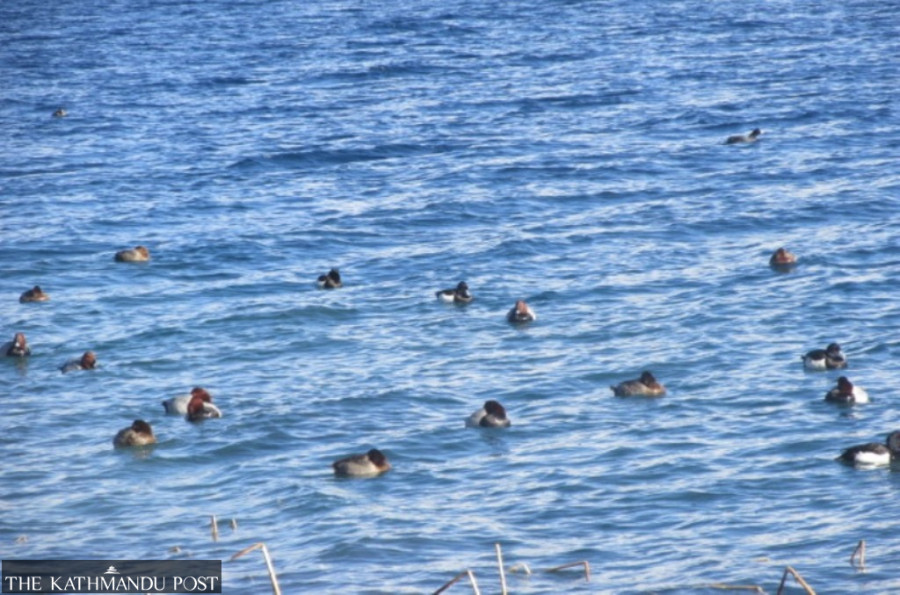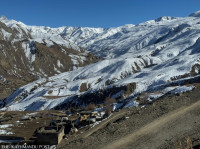Karnali Province
Declining bird numbers in Rara worry conservationists
Bird numbers and types have plunged due to the decline in the number of migratory species.
Raj Bahadur Shahi
Rara Lake, the country’s largest lake situated at an altitude of 2,990 metres above sea level, hosts a number of bird species such as partridges, red-legged partridges, nightingales, monals, kalij pheasants, chir pheasants and cuckoo, among others. But of late, the number of birds descending to the area has declined, say conservationists and local residents who witness the biannual migration of birds from close quarters.
“We used to see many birds of different species in the bushes and forests of the Rara National Park area. But in recent years, the number and species of birds in the area have declined,” said Birkha Bahadur Rokaya of Murma in Chhayanathrara Municipality-9, who is an avid bird watcher.
A study conducted by Rara National Park five years ago shows that 49 different species of aquatic birds were found in the lake.
A team of ornithologists from Bird Conservation Nepal studied the migratory birds in Rara Lake last year. The study, according to ornithologist Mohan Bikram Shrestha, shows that a total of 104 bird species such as Kalahans, Khotahans, Khadkhadehans and Sunjure are found in the Rara National Park area.
Badri Binod Dahal, conservation officer at the Rara National Park, said the number and species of aquatic birds plunged in the lake due to the decline in the number of migratory birds arriving from Western countries.
According to him, the bird species Ruddy Shelducks, locally known as chakhewa, is on the verge of extinction in Rara.
“With each passing year, the number of bird species visiting the lake has been declining,” said Dahal. “Climate change could have triggered this decline in bird numbers and species in the area.”
The conservationists from Bird Conservation Nepal say that climate change, human encroachment, overgrazing, forest fires, drought and hunting are the main causes behind the dwindling number of bird species and their population in the Rara area. Also, frequent helicopter landings and takeoffs at the helipad near the lake have also affected the bird population in the Rara area, claimed Shrestha.
Rara Lake is one of the major tourist destinations in the country. Tourists, both domestic and foreign, visit the area for bird watching.
“But the only birds that can be seen in the Rara area these days are crows and some local birds. Migratory birds are hardly seen there anymore,” said Kamal Shahi, a Mugu-based tourism entrepreneur. “We could hear birds chirping everywhere when we went to Rara Lake until a few years ago. That’s not the case now.”
Conservationists and local residents also suspect that the number of red pandas, an endangered mammal species, is on a decline in the Rara National Park area. Though the national park office does not have the exact data on red pandas, it says that the red panda population is decreasing in the area.
“Kabhra, Bulbule, Murmatap, Chuchumare, Rumkhola and Majhghatta are the major red panda habitats in the Rara National Park. But the number of red pandas is declining lately,” said Dahal.
Red panda, known as habre in Nepali, is found in the temperate forests of Nepal, India, Bhutan, northern Myanmar and south-western China where bamboo shoots are abundant. The estimated number of red pandas is less than 10,000 in the world and around 1,000 in Nepal.
Construction of roads through red panda habitats, deforestation, forest fires, poaching, excessive grazing, attack from predators and a loss of major food sources are some of the challenges facing red panda conservation efforts, say conservationists. A recent study showed that parasitic infections found in red pandas are also a major cause for concern.




 7.12°C Kathmandu
7.12°C Kathmandu.jpg)












